Her desire to create and to encourage others’ creativity has led Krispen Spencer down numerous career paths. With aspirations to teach the arts (creative writing, music, movement, painting, and sculpting) to challenged children, she earned a BFA in Special Education and Theater.
movement, painting, and sculpting) to challenged children, she earned a BFA in Special Education and Theater.
Unable to find work in that field without teacher certification, she focused instead on her own creativity, opening a creative writing business which quickly became an advertising boutique. For twelve years, she created multimedia ad campaigns, winning more than 200 awards in the advertising business.
By 1989,she had earned a Master’s Degree in Literature and was planning to pursue an MFA in Creative Writing. Then she was offered an opportunity to teach creativity at a Texas university. All of her theatrical, writing and visual arts talents, combined with her advertising experience, provided a good foundation for teaching the creative process and creative writing to 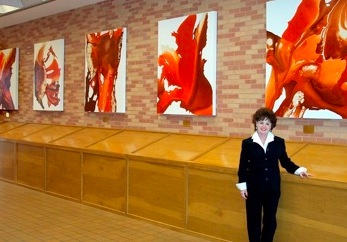 journalism and advertising majors. The courses were so popular, they drew students from many other colleges, campus-wide, serving to encourage them to follow their creative dreams.
journalism and advertising majors. The courses were so popular, they drew students from many other colleges, campus-wide, serving to encourage them to follow their creative dreams.
Since earning her MFA, Krispen has focused much of her time on developing her signature method of painting and teaching others her unique techniques. For more information on her artistic process, please see “About the Art.” For information on workshops, please email krispen@krispenart.com
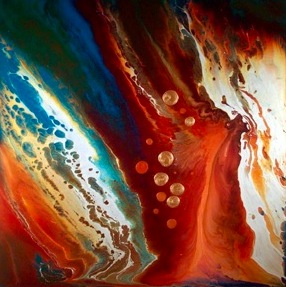 Her award-winning paintings are in numerous private and corporate collections, as well as in galleries. Not surprisingly, her subject matter is creativity – nature’s and ours as human beings. “Like nature,” she says, we have our seasons of growth, of change, of renewal, and of rebirth. To see our lives and all of the changes and uncertainties in our lives as part of nature’s creative process is to know that we are truly one with the universe, and that, for the human spirit, there is no finality.”
Her award-winning paintings are in numerous private and corporate collections, as well as in galleries. Not surprisingly, her subject matter is creativity – nature’s and ours as human beings. “Like nature,” she says, we have our seasons of growth, of change, of renewal, and of rebirth. To see our lives and all of the changes and uncertainties in our lives as part of nature’s creative process is to know that we are truly one with the universe, and that, for the human spirit, there is no finality.”
Gallery
[wpcol_4fifth id=”” class=”” style=””]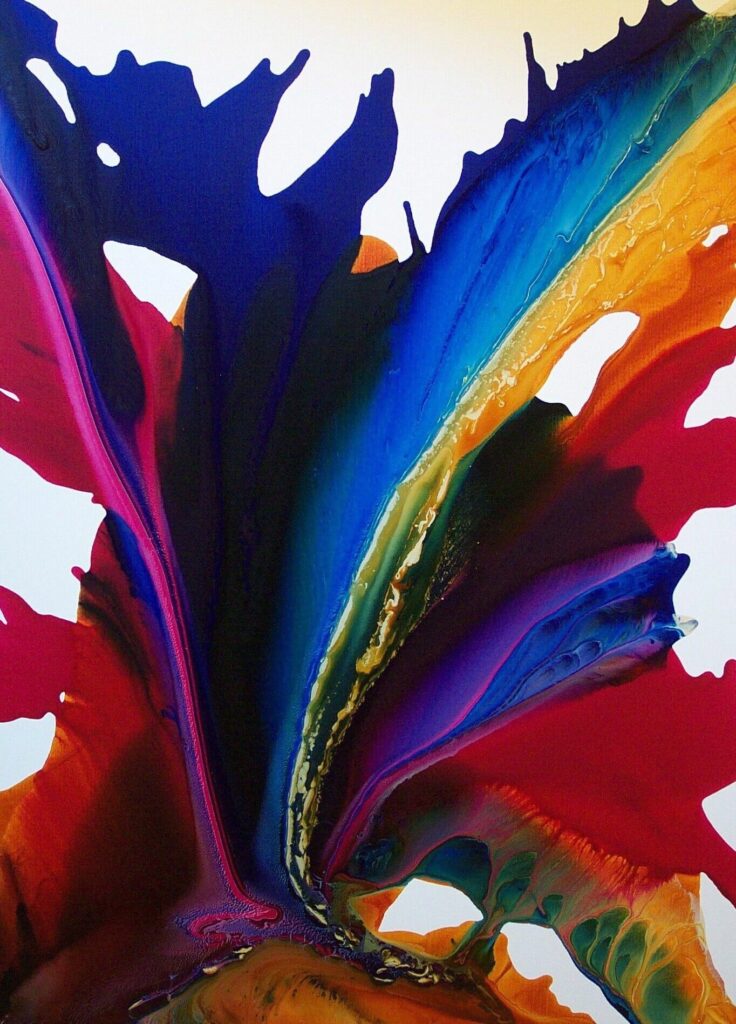 [/wpcol_4fifth]
[/wpcol_4fifth]
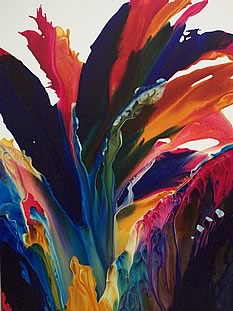 Ambrosia
Ambrosia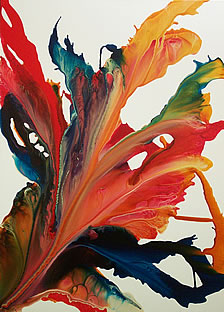 Iana
Iana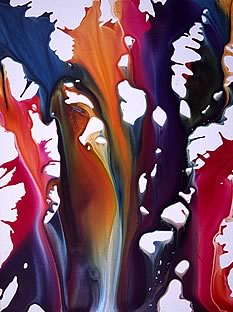 Mystery
Mystery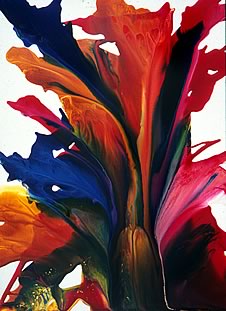 Sensation
Sensation Light Fantastic[/wpcol_4fifth]
Light Fantastic[/wpcol_4fifth]
[wpcol_4fifth id=”” class=”” style=””]The Painting Process
At the beginning of each painting session, I am reminded of a quote by Marta Graham, the famous dancer and choreographer. “Living is a form of not being sure, not knowing what next or how. The moment you know how, you begin to die a little. The artist never knows. We guess. We may be wrong, but we take leap after leap in the dark.”
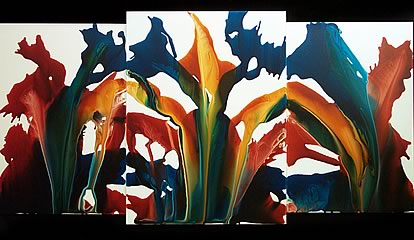 During the intuitive first stages of my painting process, which involves the pouring of premixed acrylic paints, images may appear and then disappear, as a singular shape gives birth to another, or as two colors become a third.
During the intuitive first stages of my painting process, which involves the pouring of premixed acrylic paints, images may appear and then disappear, as a singular shape gives birth to another, or as two colors become a third.
The unpainted canvas is laid horizontally on a large art table, with spacers underneath, so that the excess paint can flow off the table. Some movement of the paint upon the surface of the canvas is achieved by lifting and tilting the canvas, but this must be done in a very gentle manner. Otherwise, the paints will mix together and become “mud.” The design of the painting is established with these first layers of paint. Shapes depend on how quickly or slowly the paint is poured, dripped, or splattered, the angle from which the canvas is 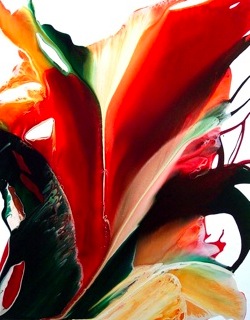 approached, the distance between the canvas and the receptacle from which the paint is poured, and the circumference of that receptacle. Parts of the canvas are left bare to achieve the effect of an image floating in space, or in infinitude. It is during the application of this first layer of paint that these “negative” spaces are determined.
approached, the distance between the canvas and the receptacle from which the paint is poured, and the circumference of that receptacle. Parts of the canvas are left bare to achieve the effect of an image floating in space, or in infinitude. It is during the application of this first layer of paint that these “negative” spaces are determined.
Successive layers of paint are added at various intervals during the drying process to create the illusion of depth. The process depends strongly on instinctive timing. Each additional layer of transparent pigments will affect the color, texture, and viscosity of preceding layers. Although these new layers must be added at precise times, it is only by observing how the layers are reacting with each other and with the surface that I can know when to add more paint.
The temperature in the studio and level of humidity are as important as correct lighting. Both control the final image and can, when extreme, spoil a good painting in the last hours of creation.
Also, the painting must remain at some level of wetness throughout the many hours of completion, and it cannot be left alone for any time. There are many variables, and this process does not allow for any retakes, so not every effort is entirely successful. But that moment when the work takes on a life of its own, and I am lucky enough to be there to see it, is worth every risk involved.[/wpcol_4fifth]
